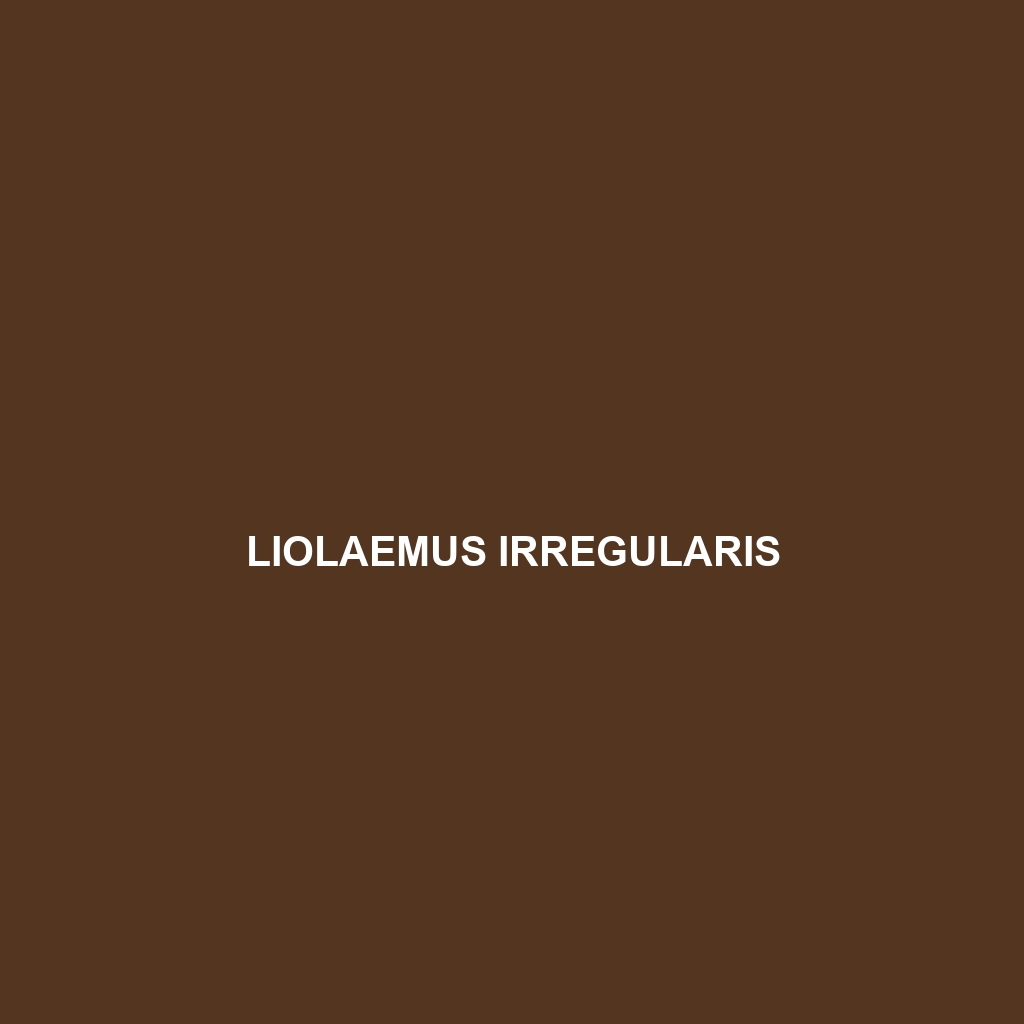Introducing the Liolaemus maldonadae, or Maldonado's lizard, a distinctive insect-eating lizard native to the temperate forests and shrublands of southern South America. This adaptable species features vibrant coloration, can grow up to 30 cm, and plays a vital role in its ecosystem by regulating insect populations and contributing to the food web.
Tag: lizard physical characteristics
Liolaemus lutzae
Discover the vibrant and adaptable <b>Liolaemus lutzae</b>, a high-altitude lizard native to the temperate forests and rocky outcrops of Chile and Argentina. With striking coloration, unique social behaviors, and a diet primarily consisting of insects, this species plays a crucial role in its ecosystem while showcasing fascinating mating rituals and territorial displays.
Liolaemus lopezi
Discover the unique Liolaemus lopezi, or Lopez's Liolaemus, a diurnal lizard native to the Patagonian region of Argentina, thriving in temperate forests, savannas, and rocky outcrops. With a length of 15 to 25 centimeters, this omnivorous species exhibits vibrant mating displays and plays a vital role in its ecosystem by controlling insect populations while serving as prey for larger predators.
Liolaemus loboi
<p><b>Liolaemus loboi</b> is a striking lizard native to the temperate regions of Argentina and Chile, recognized for its slender body, vibrant color patterns, and diurnal behavior. This insectivorous species plays a crucial role in its ecosystem by regulating insect populations and is currently classified as vulnerable due to habitat loss.</p>
Liolaemus leopardinus
<p><b>Liolaemus leopardinus</b>, commonly known as the leopard lizard, is a striking species native to the temperate forests of southern Chile and Argentina, recognized for its distinctive leopard-like spots and agile build. Primarily insectivorous, this diurnal lizard plays a vital role in its ecosystem by regulating insect populations and serves as a prey species within the food web.</p>
Liolaemus kriegi
Discover the fascinating Liolaemus kriegi, a resilient lizard native to the rocky terrains of southern Chile and Argentina. With its distinctive earthy coloration and diurnal behavior, this insectivore plays a crucial role in its ecosystem while showcasing unique adaptations for survival in varied habitats.
Liolaemus koslowskyi
Discover the fascinating Liolaemus koslowskyi, a vibrant lizard native to the temperate forests of southern South America, boasting a unique dorsal pattern and a diet primarily consisting of insects. This diurnal species plays a crucial role in its ecosystem through insect population control and serves as prey for larger predators, highlighting its importance in maintaining ecological balance.
Liolaemus jamesi
Introducing the Liolaemus jamesi, a fascinating lizard native to the temperate forests and grasslands of southern South America. With a robust body, vibrant markings, and a diet primarily consisting of insects, this species showcases intriguing behavior and plays a vital role in its ecosystem.
Liolaemus irregularis
Introducing the <b>Liolaemus irregularis</b>, or irregular ctenophorus, a stunning insectivorous lizard native to the temperate forests and grasslands of Argentina and Chile. With its slender body, vibrant coloration, and unique behavioral traits, this resilient species plays a crucial role in maintaining the ecological balance of its habitat.
Liolaemus inti
Discover the Liolaemus inti, or Inti lizard, a vibrant, omnivorous reptile native to the temperate forests and savannas of the Andean regions in Peru and Bolivia. These diurnal lizards, measuring 6 to 12 inches, play a vital role in their ecosystem by controlling insect populations and serving as prey to larger predators.









